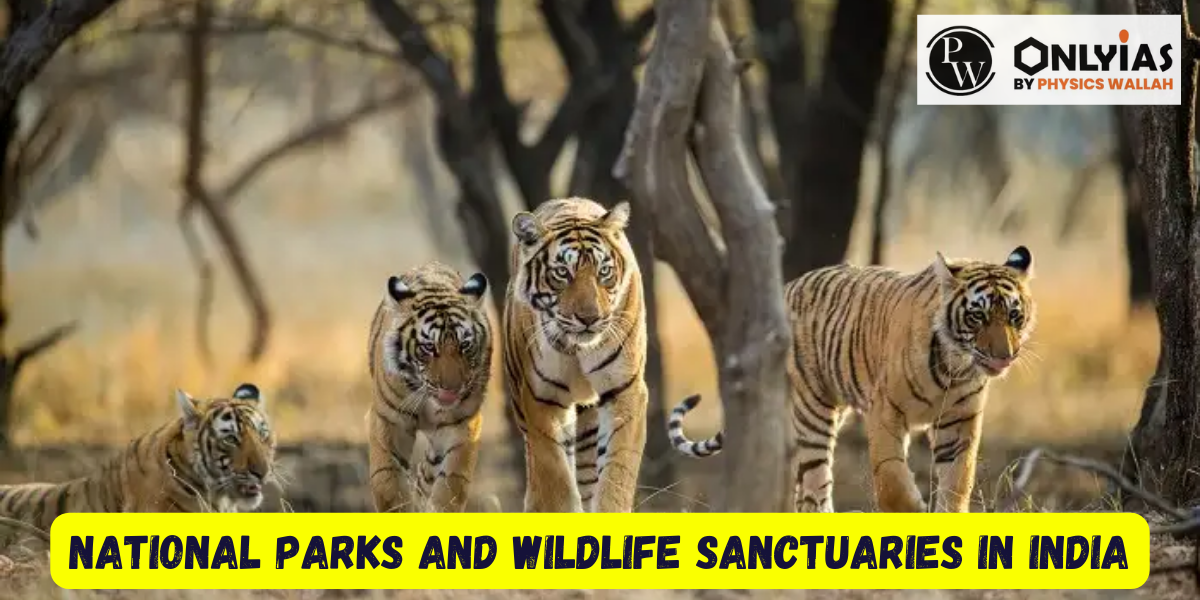
National parks and wildlife sanctuaries are crucial conservation areas in India, known for their rich biodiversity and the protection of endangered species. These protected areas play a vital role in preserving India’s natural heritage, promoting ecological balance, and providing habitats for diverse flora and fauna. With their stunning landscapes, unique ecosystems, and strict conservation measures, national parks and wildlife sanctuaries attract nature enthusiasts, researchers, and tourists from around the world.

The establishment of national parks and wildlife sanctuaries in India dates back to the early 20th century when the need for conservation and protection of wildlife became evident. One of the pioneering figures in this regard was Jim Corbett, a British hunter-turned-conservationist, who played a crucial role in advocating for wildlife preservation in the region. His efforts led to the establishment of Hailey National Park (now Jim Corbett National Park) in 1936, which became the first national park in India.
The Wildlife Protection Act of 1972 marked a significant milestone in India’s conservation efforts. This legislation provided legal protection to wildlife and their habitats, facilitating the creation of more national parks and wildlife sanctuaries across the country. Today, India boasts a vast network of protected areas, including over 100 national parks and over 500 wildlife sanctuaries, covering diverse landscapes from lush forests and wetlands to rugged mountains and coastal regions.
India had a total of 106 National Parks and 566 Wildlife Sanctuaries. Please note that these numbers are subject to change as new protected areas may have been designated since then. It’s always best to refer to the latest official sources for the most up-to-date information on National Parks and Wildlife Sanctuaries in India.
India takes pride in its extensive network of protected areas, which includes 104 national parks, 551 wildlife sanctuaries, 131 marine protected areas, 18 biosphere reserves, 88 conservation reserves, and 127 community reserves. Together, these areas cover a vast expanse of 1,65,088.57 square kilometers. In total, India boasts 870 protected areas, constituting approximately 5.06% of the country’s geographical area. This commitment to conservation and preservation highlights the nation’s dedication to safeguarding its diverse wildlife and natural habitats.
National parks and wildlife sanctuaries in India serve multiple purposes, ranging from wildlife conservation and habitat protection to scientific research, eco-tourism, and environmental education. Here are some key aspects of their importance:
1. Biodiversity Conservation: These protected areas act as havens for diverse plant and animal species, including many endangered and critically endangered ones. They help in maintaining ecological balance and preserving genetic diversity.
2. Habitat Preservation: National parks and wildlife sanctuaries provide secure habitats for wildlife, allowing them to thrive without human interference. They offer a range of ecosystems, such as forests, grasslands, wetlands, and marine areas, catering to the diverse needs of various species.
3. Scientific Research: These conservation areas serve as living laboratories for scientists and researchers to study various aspects of ecology, behavior, and biology of wildlife. The findings contribute to better understanding and conservation strategies.
4. Tourism and Recreation: National parks and wildlife sanctuaries attract tourists and nature enthusiasts, providing opportunities for wildlife safaris, birdwatching, trekking, and other recreational activities. Eco-tourism generates revenue, promotes local livelihoods, and raises awareness about conservation.
5. Environmental Education: These protected areas offer educational programs and interpretive centers to raise awareness among visitors, local communities, and future generations about the importance of conservation, sustainable practices, and the value of wildlife.
India is a land of extraordinary biodiversity and natural wonders, boasting a rich tapestry of flora and fauna that has captivated travelers and nature enthusiasts for generations. To safeguard this precious natural heritage, the country has established a network of National Parks and Wildlife Sanctuaries across its diverse landscape.
These protected areas not only serve as havens for endangered species but also offer visitors a chance to witness the incredible beauty and ecological significance of India’s wilderness. From the majestic snow-capped mountains of the north to the lush green forests of the south, and from the arid deserts of the west to the pristine coastal regions of the east, India’s National Parks and Wildlife Sanctuaries are a testament to the nation’s commitment to preserving its ecological treasures.
The Table below contains the list of some Prominent National Parks and Wildlife Sanctuaries in India
Some Prominent National Parks and Wildlife Sanctuaries in India |
||
|---|---|---|
| National Parks | Wildlife Sanctuaries | State |
| Jim Corbett National Park | Kaziranga National Park | Uttarakhand |
| Ranthambore National Park | Periyar Wildlife Sanctuary | Rajasthan |
| Sunderbans National Park | Gir National Park | West Bengal |
| Bandipur National Park | Sariska Tiger Reserve | Karnataka |
| Kanha National Park | Pench National Park | Madhya Pradesh |
| Kaziranga National Park | Dandeli Wildlife Sanctuary | Assam |
| Tadoba Andhari Tiger Reserve | Mudumalai Wildlife Sanctuary | Maharashtra |
| Manas National Park | Satpura National Park | Kerala |
| Pench National Park | Nagarhole National Park | Chhattisgarh |
| Keoladeo Ghana National Park | Bhadra Wildlife Sanctuary | Gujarat |
| Sariska Tiger Reserve | Chinnar Wildlife Sanctuary | Haryana |
| Periyar Wildlife Sanctuary | Kalakkad Mundanthurai Tiger Reserve | Tamil Nadu |
Below is the list of National Parks and Wildlife Sanctuaries in India:
India is a land of unparalleled biodiversity, boasting a rich tapestry of diverse ecosystems and a remarkable array of wildlife. This incredible natural heritage is preserved and protected through an extensive network of National Parks and Wildlife Sanctuaries spread across the country. From the majestic peaks of the Himalayas to the lush forests of the Western Ghats and the vast plains of the heartland, these protected areas serve as vital havens for an extraordinary variety of flora and fauna.
Bird Sanctuaries In India, State-Wise List of Important Bird Sanctuaries 2023
Longest Bridges in India Complete and Comprehensive List 2023

<div class="new-fform">
</div>